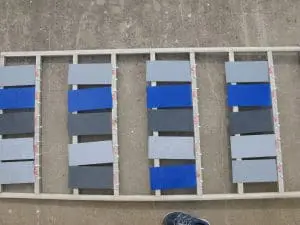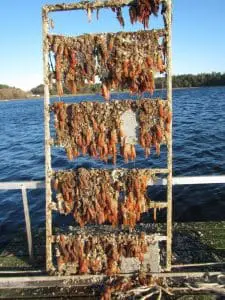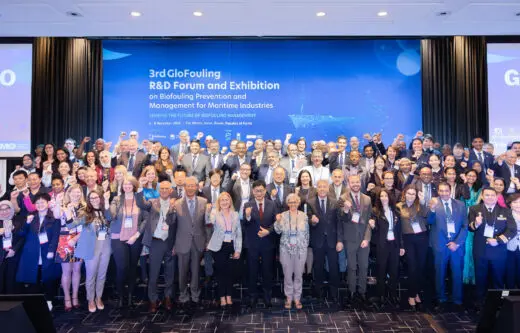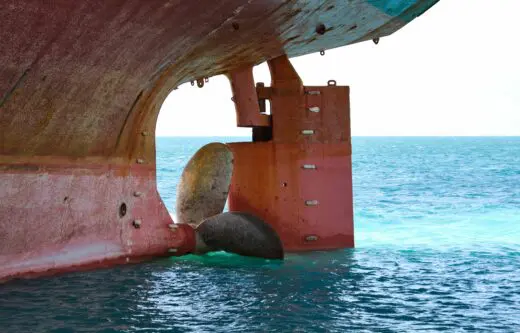New application success for Selektope® in silicone-epoxy coatings
The development of two-part epoxy resin coatings that harness antifouling properties is gaining importance as biofouling challenges increase across the global maritime fleet.
Advances made in epoxies – commonly known as ‘hard coatings’ – are increasingly satisfying the need to offer antifouling protection for hard structures in sea water conditions and vessels operating in harsh environments, in ways that satisfy commercial demands as well as applicable environmental standards.
In the wake of the tri-butyl-tin ban, easy-release or ‘foul release’ coatings based on silicone elastomers have been widely used to offer protection against biofouling build-up on ships’ wetted hard surfaces. While proving successful in commercial and military applications where abrasion is often not an issue, these coatings have proved to be too soft for harsh conditions. At the same time, emissions regulations and the need to optimize hull performance to cut fuel bills mean the twice-yearly hull cleaning is now commonplace to reduce the drag caused by fouling.
However, coating systems such as silicone, traditional self-polishing coating (SPC) and other coating types may be damaged each time the hull is cleaned, thus reducing their total service life. An ideal solution would be to develop coatings that offer antifouling protection but that can also survive and function well in abrasive circumstances and in harsh environments.
American paint specialist Wearlon®, part of Plastic Maritime Corp., and I-Tech AB of Sweden have recently been conducting work on the development of an epoxy-silicone coating with antifouling properties through the addition of the unique, bio-repellent active agent Selektope® with one of the Wearlon® silicone-epoxy coatings. Trials, carried out over a period of 19 months, indicate that a commercially-viable ‘hard’ coating that also offers superior antifouling performance is within reach.
Selektope®, chemically known as medetomidine and registered by I-Tech AB, is an organic, non-metal compound that is usually used in SPC systems. It is very efficient at preventing barnacle fouling when included in marine coating systems used to paint and protect ocean going vessels, particularly during extended idle times and at elevated water temperatures. Its first-of-its kind mode of action prevents barnacle fouling by temporarily hyper-activating the swimming behaviour of barnacle cyprid larvae, making it impossible for them to settle on a wetted hard surface. It is characterized by high efficacy at extremely low concentrations (0.1-0.3% w/w) and its ultra-low leaching offers paint manufacturers the flexibility to boost copper-based paint formulations or replace copper completely.
Whereas silicone-epoxy systems offer abrasion resistance and easy to clean properties, they still have limitations when exposed to sea water at static conditions. The addition of Selektope® enables highly innovative coating systems to be developed and, as such Wearlon® has trialled the inclusion of Selektope® in its Wearlon® Super F-3M range to develop an abrasion-resistant coating with boosted antifouling properties. The coating is expected to be particularly effective in areas where high-wear strength is required such as around propellers, and for use on off shore equipment.
Wearlon® Super F-3M is a water-based silicone-epoxy coating. The mole % of silicone to epoxy is varied and coupled with surfactant and filler selection to obtain properties that are unique for a variety of applications. Wearlon® Super F-3M is one of the most hydrophobic of all the Wearlon® coatings, having a low surface tension when in contact with water, resulting in drag reduction. Because of its excellent abrasion and corrosion resistance it is being used in a variety of marine applications including zebra mussel control.
The trialing of the Wearlon® epoxy-silicone product containing Selektope® was conducted at I-Tech’s test facility on the west coast of Sweden over a period of 19 months. A successful formulation was achieved through the addition of a 1-metoxy-2-propanol solution of Selektope® to component B of the two-component system of Wearlon® Super F-3M. Traditionally, when formulating rosin gum-based or acrylic-based antifouling paints, Selektope® is always best added to the paint as a solution. To add it to the formulation, it should be dissolved in an appropriate solvent before adding pigments, metal oxides (e.g. ZnO), fillers, binders and other additives. Test panels were coated with two layers of the test product by a roller. For the formulations that underwent panel testing, a concentration of 0.3% Selektope® w/w of the final wet paint mixture was used to ensure the steady release of the biocide.
Developing an epoxy coating that was inclusive of Selektope® has been key to producing a more impact-resistant, yet flexible and low abrasive epoxy silicone coating system that shows excellent antifouling performance. The trials of the Wearlon® Super F-3M range product with Selektope® included concluded that the addition of Selektope® to the Wearlon® epoxy-silicone coating resulted in significantly improved antifouling properties when exposed to raft tests in sea water.
In the future, the partners are convinced that epoxy-silicone coating technology will achieve wider acceptance on ocean going vessels due to Selektope®-empowered antifouling performance.


Authors: Dan Isaksson (I-Tech AB), Catherine Austin (I-Tech AB), Oliver Weigenand (I-Tech AB), John Smith (Wearlon).
Related articles

Innovative Solutions and Global Collaboration: Highlights from the 3rd GloFouling R&D Forum in Busan

Barnacles: Invited or Invader?

Exploring the Diversity and Resilience of Barnacles!
